To a family who adore off-season weekend trips to Europe, Berlin before Christmas is the most child-friendly place of all. Don't miss the city's famed Christmasmarkets, too.
Berlin is one of the most exciting and, at the same time, enigmatic cities in Europe. In the years of dual Germanys, it was an island of the West floating deep in the sea of East Germany. Long a hotspot of Cold War tension, it has gone from a city divided by a wall with a deadly no-man’s land in between, to one of the “hottest” in Europe — a magnet for artists, writers, politicians, and my family.
I had spent a fabulous month there in the early 80s, when Berlin was a particularly wild and crazy place, much like the renowned Paris of the 20s.
My wife and I went back in the late 80s just before The Wall fell (1989), and experienced a taste of East Berlin with a train ride across the border to see the legendary masterpieces on Museum Island.
Recently, cheap off-season airfares led my extended family back to Berlin for an adventurous multi-generational Thanksgiving. While the city had dramatically changed in our absence, we were not disappointed. And though the cold and snowy winter weather was not great, Berlin’s tremendous holiday spirit makes this the very best season for family visitors.
Germany’s Traditional Weihnachtsmarkt
One of the surprising and major pleasures of our trip was the seasonal Weihnacthsmarkte (Christmas Markets) that spring up in squares and open spaces all over town, beginning in late November and running through Christmas. These markets, an old European tradition, are small outdoor fairs with many booths featuring traditional Christmas crafts and food tents offering a variety of German, as well as some ethnic, dishes. Look for stollen and fruitcakes, ginger biscuits and other sweets. One of the most popular tents serves the traditional gluhwein, a red mulled wine that helps take the chill out of the autumn air.
Some fairs are extremely crowded, but our favorite, the Weihnachtszauber Gendarmenmarkt or Christmas Magic Market, was just “comfortably” packed. It’s found in the gorgeous Gendarmenmarkt, the square in front of the Konzerthaus Berlin (on the Stadtmitte U-Bahn or subway stop). This is considered one of the most beautiful squares in the city and we couldn’t agree more. In addition to the surrounding neighborhood’s classic 18th-century architecture, the uber-hip fashion photographer Helmut Newton opened a bar there. For the €1 admission, your family will find high quality artisans’ goods and delicious food offerings. There is a small stage where music groups and performers entertain well into the evening.
Our other favorite Christmas Market was near Museum Island next to the Staatsoper (the State Opera House). It’s very crowded, lively, and in the midst of it you’ll find a fabulous and famous pastry shop, the Opernpalais Unter den Linden. This eatery provides a welcome warming stop in the chilly season and a pastry menu not to be missed.
The other top Christmas markets are found in the northwestern part of the city at Spandau, one of the largest fairs featuring a crêche with live animals, and at Alexanderplatz in the Mitte area. The local papers review each fair weekly, but check with your hotel concierge for directions and opening hours.
Crossing The Wall & Other Attractions
Both of my previous visits to the city were indelibly marked by the presence of The Wall, which ran 155-kilometers-long through the area. The nightly news during those years (1961-1989) was rarely without at least one escape attempt over, through, or under The Wall, attempts which more often than not ended fatally.
There are still a few pieces of the infamous wall still standing as memorials to the time past. Mauerpark Bernauer Strasse, at the corner of Ackerstrasse (in the Mitte section), has a 230-foot (70m) section of the original wall with the death strip between.
Checkpoint Charlie was the border crossing between East and West Berlin for the Allies, foreigners, and others. Today, the private Checkpoint Charlie Museum (Haus am Checkpoint Charlie) provides an eccentric but fascinating history of the Wall and the countless attempts to cross it to the free Western side. The various vehicles, tunnels, airplanes, and many other imaginative devices used in these escapes are on display here. It’s a vivid reminder of a very tense period in world affairs, not dissimilar to the tensions of our current times.
Potsdamer Platz, a busy intersection of commerce and traffic that was once the heart of East Berlin, is Berlin’s newest entertainment, shopping and business area. There is a bustling open-air plaza at the enormous Sony Center (a development that successfully revitalized the neighborhood), with a skating rink, SonyStyle store, the Filmmuseum (see the Marlene Dietrich Collection), special holiday crafts shops, and many restaurants. A real wintertime treat for families is across the busy street: a very tall, tube-like run, where you sit on inner tubes and hurtle down a steep track. There’s also a snow pen where passersby can trying skiing by donning the gear provided and holding onto a poll that gets pulled in circles. We retreated to the Sony Center afterwards for some serious shopping and a meal.
We revisited Kurfurstendamm (the boulevard known as Ku’damm) where we had stayed on our late 80s trip, with its fancy shops. Do not miss the amazing department store KaDeWe (pronounced KAH-day-vay), Germany’s answer to Harrod’s. KaDeWe is worthy of a visit for its quality merchandise and remarkable food courts, and it glitters even more brightly in the weeks before the Christmas holidays.
Also found in this area is the Kaiser-Wilhelm-Gedachtnis-Kirche (Memorial Church), a late 19th-century church that was destroyed during the war. In the 50s, controversy raged over whether to rebuild the church, but it was decided to leave it as a reminder of the carnage of war. The burned out shell was integrated into the new church buildings and now stands in the middle of the restaurants and clubs of modern Ku’damm.
Berlin is so full of interesting sights and experiences that a long weekend will only allow you to scratch the surface and will certainly make you want to come back for more.
A Great Find – A Perfect Family Hotel
Where we had once taken a train searched by bomb-sniffing dogs and hostile East German guards to get into East Berlin, we now stayed in its former heart – Mitte (as in the middle) – the cultural heart of the unified city. From our lovely Derag Hotel & Living Henriette (49 (0)30-2 46 00-900), we could walk to many of the top attractions of the area, including Museum Island, the Nikolai Quarter, the Jewish Museum, the great shopping streets of Friedrichstrasse and Unter den Linden. The Reichstag and Brandenburg Gate are only a short taxi or U-Bahn ride away.
The Derag Hotel Henriette was a real treat. Situated on one of the many canals in the city, there are apartments with small, fully stocked kitchens available among the 54 rooms and suites, all done in a cool understated European style. At the friendly front desk there’s a guest computer with complimentary Internet access and, at the sister Derag Hotel Grosse Kurfurst across the street, a business center and small health club with sauna and steam room.
Though the Euro is definitely not our friend (at least for Americans), the Henriette’s economics are family friendly. For 2007, nightly rates for double rooms are €180-€285 per person per night and the family-apartments sleeping three to four rent from €220 to €370 per person per night, all including a wonderful hot breakfast. For stays over 15 days, the full service apartments are bargains, ranging from €85-€131 per person night. This is a great neighborhood of grocery stores and shops, and we loved walking to all the nearby sights. For other excursions, walk directly across the street to the Märkisches Museum U-Bahn stop of the extensive underground subway system that that leads easily to all parts of the city.
Details, Details
We began our too brief Berlin experience with a custom guided tour. While not cheap (€435 including bus for up to eight people), it provided a good grounding for the geography of the city, guided commentary on a number of sights, and ease of movement with grandparents onboard. We arranged it through Berlin Tourismus Marketing (the City Tours section of the site) and had a wonderful guide, Dr. Matthias Müller (in the center at left). Without the bus, the guide’s fees are more afffordable.
Berlin also has Hop-on, Hop-off bus tours with open-top double-decker buses that will take you on a narrated tour of the city (tape recorded commentary is in several languages) for a lot less money, but in less comfort. However, English is widely spoken and you are unlikely to get lost if you prefer to wander on your own. The best of these bus tour operators is Severin + Kuehn ( 49/030/880 41 90).
There are also a number of walking tours offered by Berlin Walks ( 49/030/301 91 94). Among the offerings are the Discover Berlin tour (an introductory tour), the Infamous Third Reich Sites tour, the Sachsenhausen Concentration Camp Memorial Tour, the Jewish Life in Berlin Tour, Discover Potsdam tour, and the Berlin—Nest of Spies tour.
Although taxis are readily available and a welcome convenience at times (tired children, end of day), we prefer the U-Bahn (underground) or S-Bahn (above ground) trains, and public buses, to get around. They are quick, inexpensive and go almost anywhere a tourist would want to go. If you plan to use the U-Bahn regularly, consider the Welcome Card, a special discount program for tourists. The 48-Hour card costs €16; the 72-Hour card €21. With that, one adult and three children under 14 can travel on buses, underground and S-Bahn trains. For comparison, a one-way ticket is €2.10, a day-pass €5.80, a seven-day pass €25.40. With the Welcome Card comes a booklet of vouchers good for 25%-50% discounts at many of the top sightseeing and cultural destinations. Note that on your first journey on the Welcome Card, you must validate it in the red or yellow boxes found on train platforms, and in buses or trams. That starts the clock on the card. You can buy it at one of the Berlin Tourism Infostores or buy it online at this site.
For easy access to more tourist information, as well as help in finding accommodations or booking guides, try the very informative Berlin Tourist Information website http://www.berlin-tourist-information.com.
Dear Reader: This page may contain affiliate links which may earn a commission if you click through and make a purchase. Our independent journalism is not influenced by any advertiser or commercial initiative unless it is clearly marked as sponsored content. As travel products change, please be sure to reconfirm all details and stay up to date with current events to ensure a safe and successful trip.
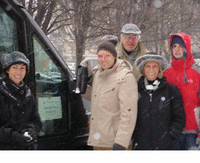



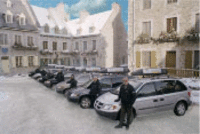
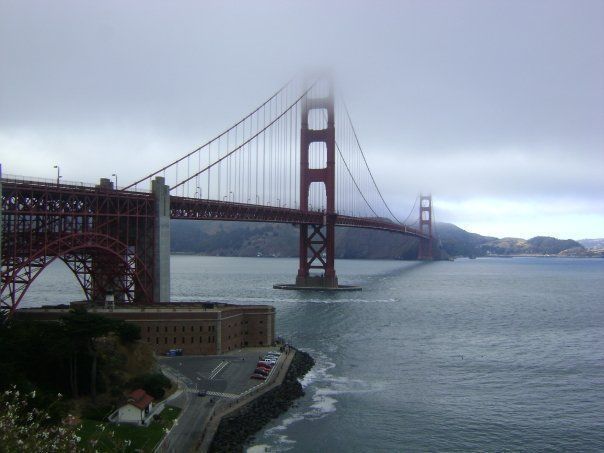

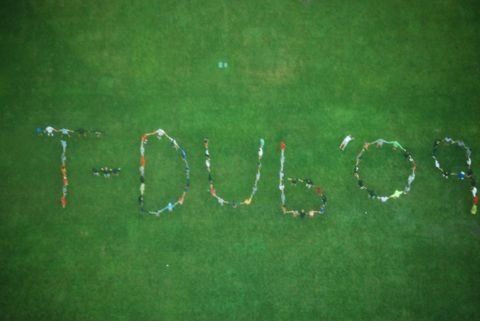
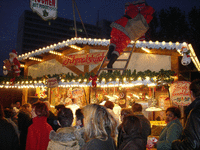

I haven’t, but I found a nice site at http://www.auto-europe.co.uk/- It’s AutoEurope, the car rental company, and they have lots of fly-drive offers for families interested in visiting the Christmas markets in Munich, Dresden, Nuremberg, Salzburg, Vienna, Zurich and Strasbourg. maybe it will have some good ideas for your next Christmas market adventure.
I’ve been to the Christmas Market in Munich, and it is wonderful! It sounds like the Berlin Christmas Markets are just as much fun. I remember buying newspaper cones full of freshly roasted chestnuts and wandering around admiring booth after booth of Christmas ornaments. The booths seemed to be lined with silver foil, so they reflected all the lights and ornaments. I’ve heard that Nuremburg has one of the most beautiful Christmas markets. Anyone been to that one?